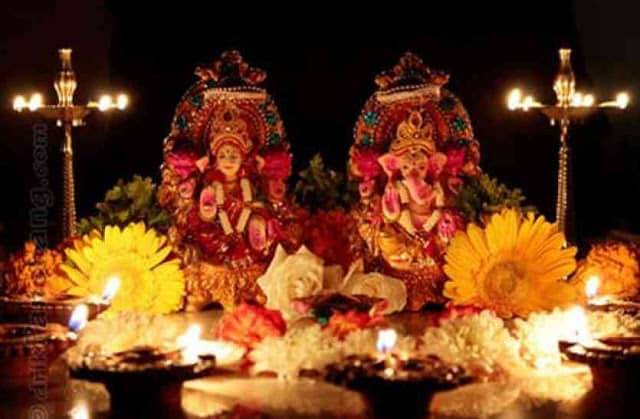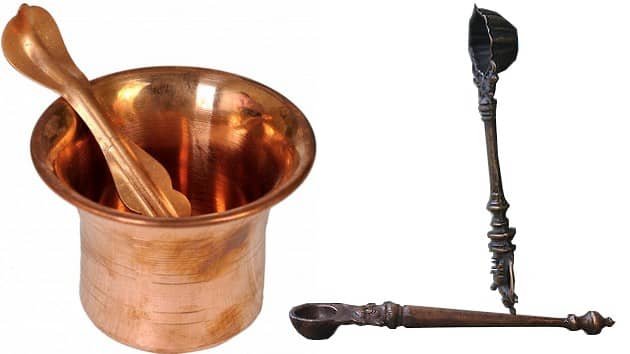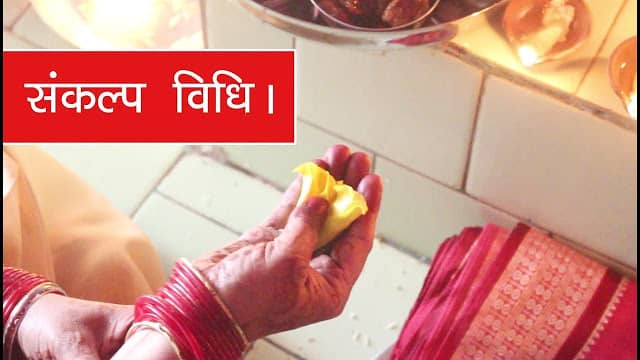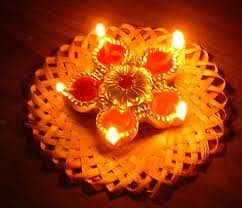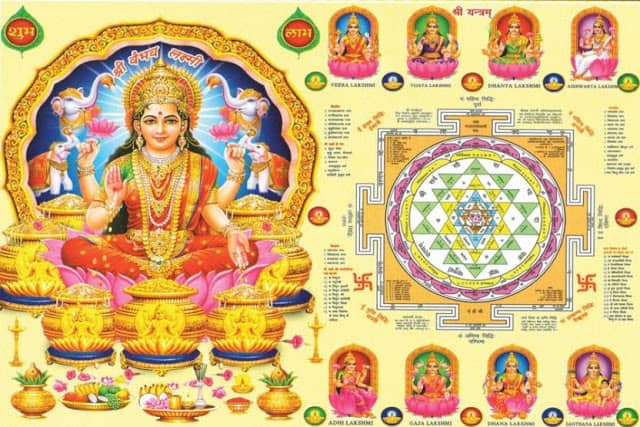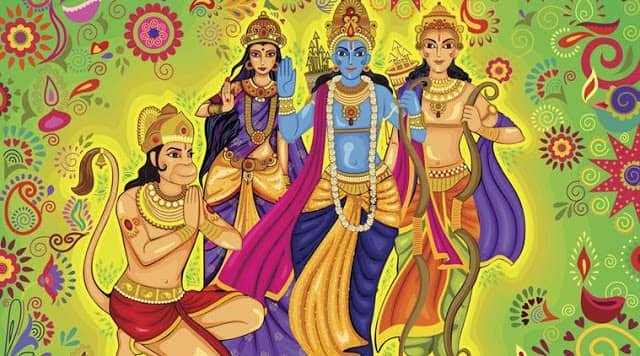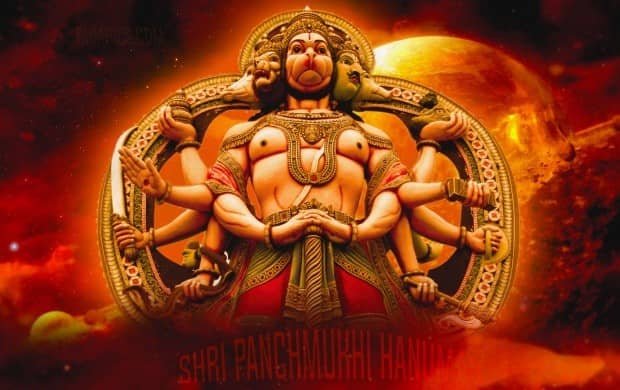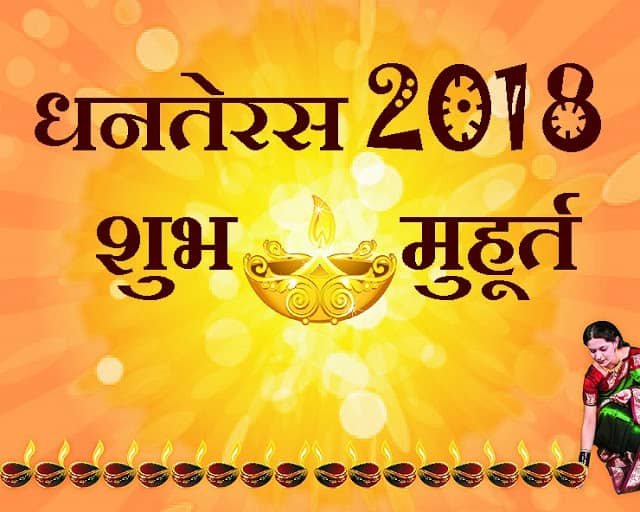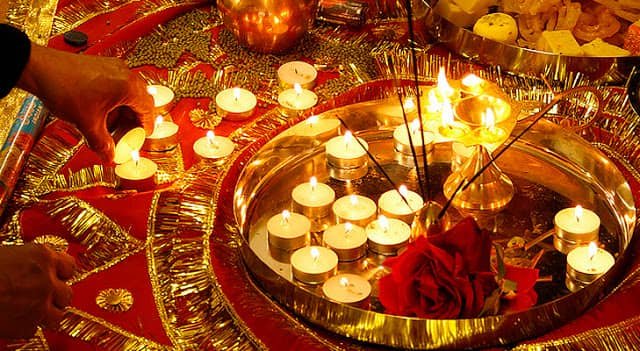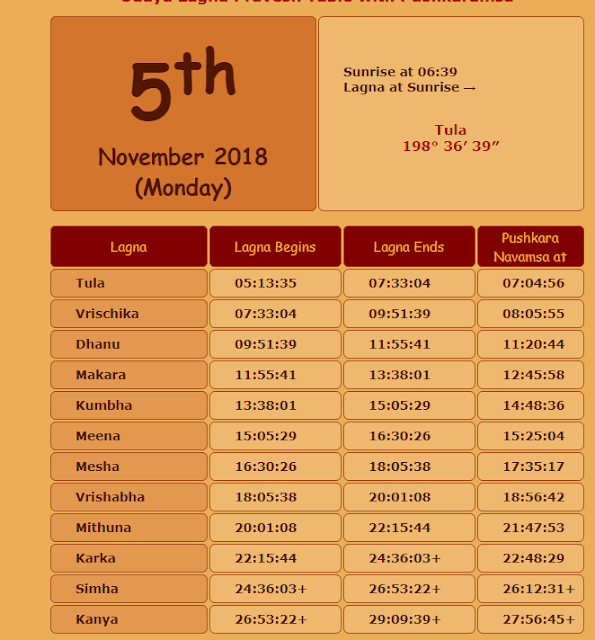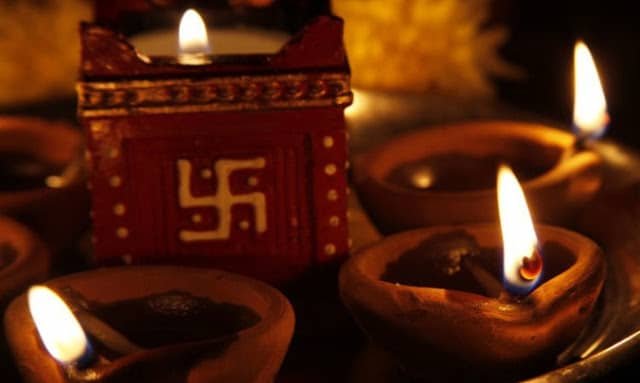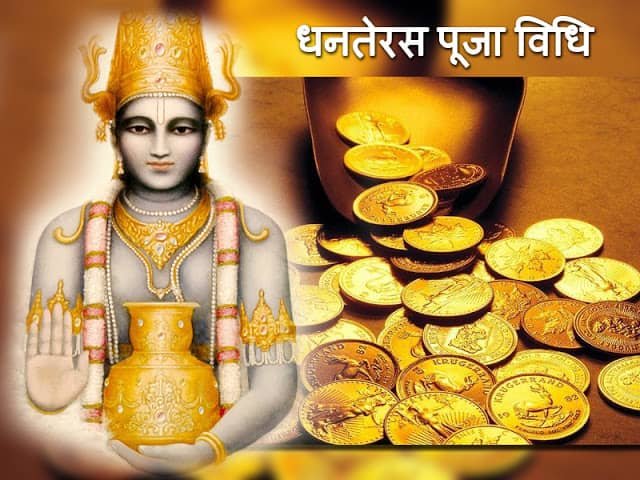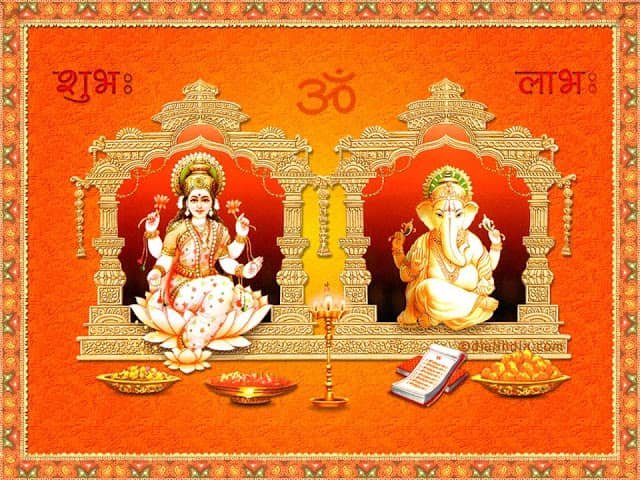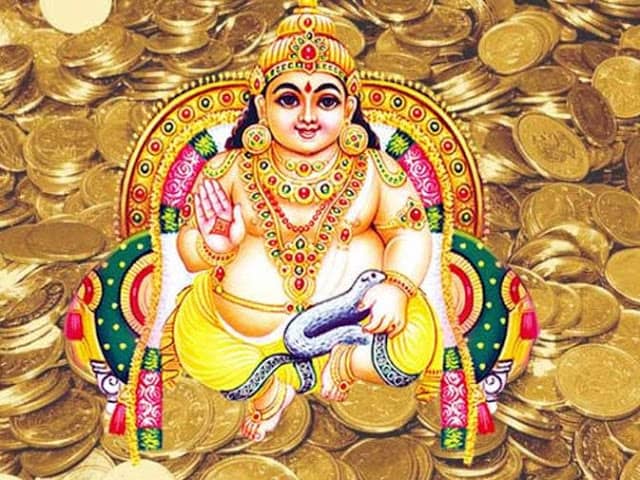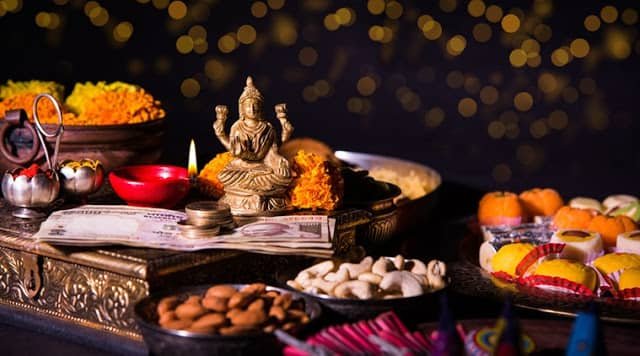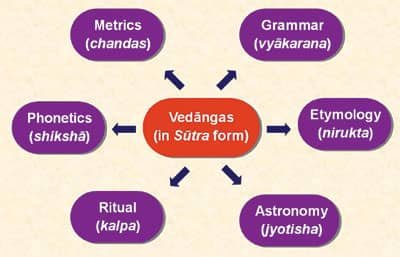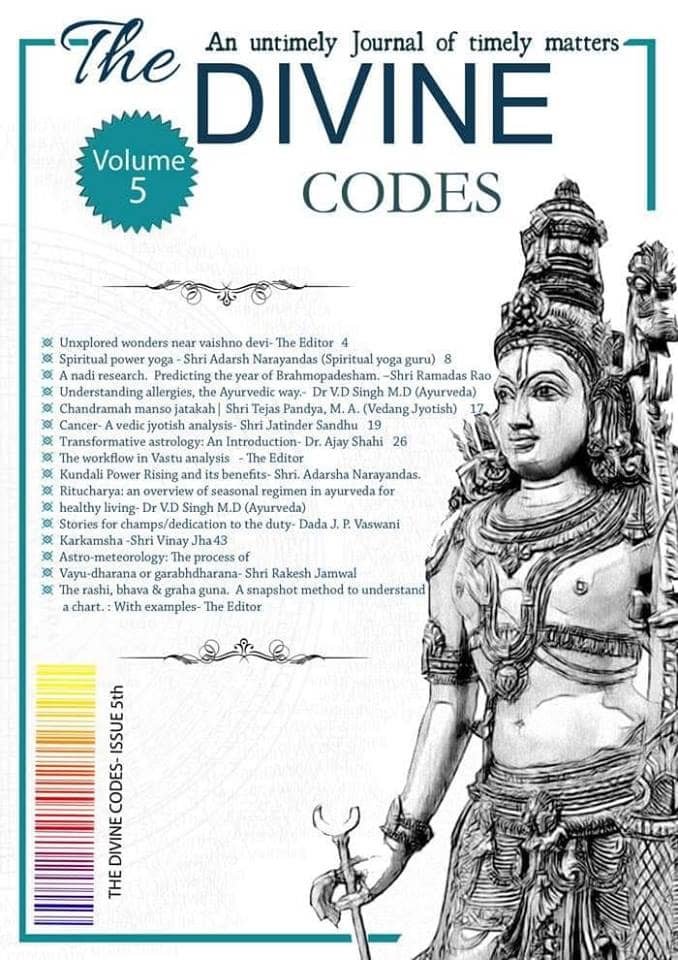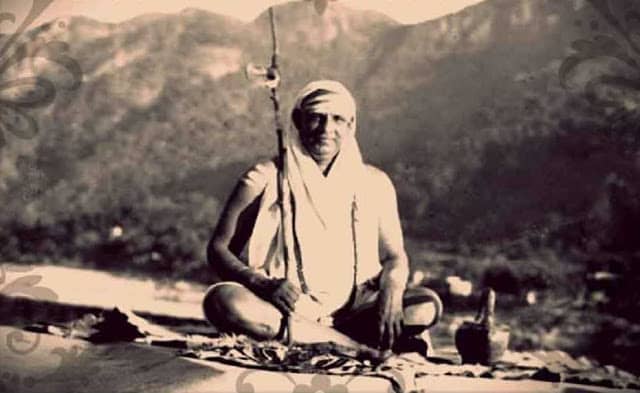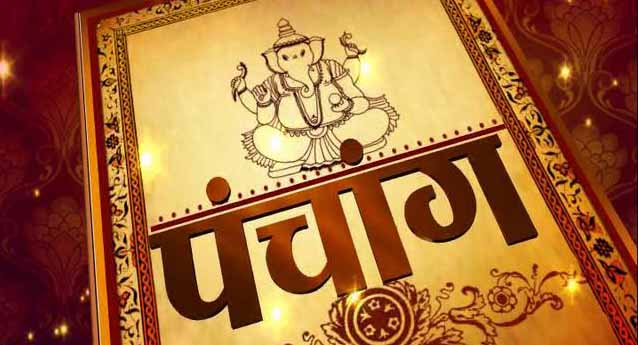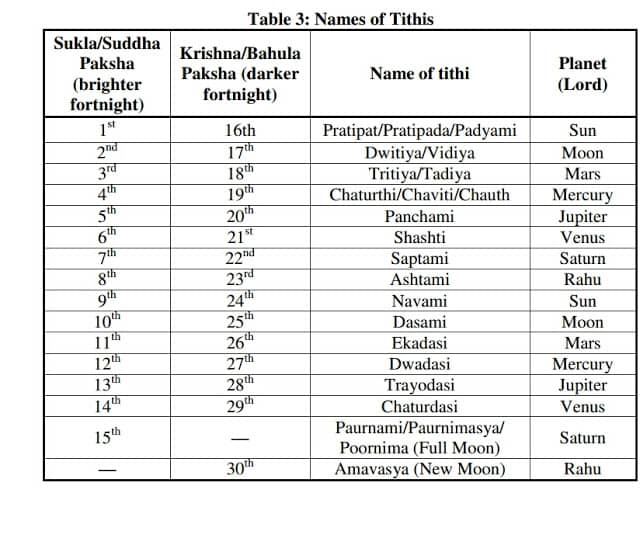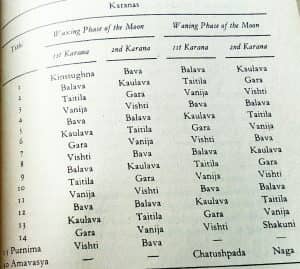Panchang — Panchang word is combination of Panch means Five and ang means limb.
This means Panchang is form with Five limbs.
Five limbs of Panchang
The Five limbs of Panchang are
1)Var
2) Thithi
3) Nakshatra
4)Karan
5)Yoga
Now we know about all limbs of Panchang one by one.
Var —
Var is Seven.
1) Ravivar Or Sunday
2) Somvar or Monday
3) Mangalvar or Tuesday
4) Budhvar or Wednesday
5) Guruvar or Thursday
6) Shukravar or Friday
7) Shanivar or Saturday
In Our Vedic system Var or day is changed after Sunrise. For example Today 18 may 2018 is Friday or Shukravar. In Standard calendar day is changed after midnight and 12am and new day will be Saturday.
But in Vedic system day change after Sunrise. So suppose Sunrise in today is 6 am and Tomorrow 19 may sun rise at 6 am. So Vedic var of the day will be from 6am today to next day 6am. Means Shukrawar from 6 am upto 6 am next day 19 may. Hope you understand the var concept and don’t confuse with standard day system.
Now in our Vedic system, each var is ruled by a different planet. So according to their rulership in our classical book of astrology gives hints about their best effects on Native.
Ravivar(Sunday) — This day is ruled by Sun. So people born in this day is consider blessed by Lord Sun.
People born on Sunday is honourable by others. He has brown hair, eyes and body colour. He will be proudy or having ego or Proudness.
Somvar (Monday) — This day is ruled by Moon. So they are blessed by Moon quality.
So He will be sensual or having rajsic gun or having desires (actually word used is Kaami ). He will be charming. He will be kind from the heart.
Tuesday (Mangal Var) —- This day is ruled by Mars. So native is blessed by Mars quality.
So He is cruel. He will be interested in hard or argumentive words or speech. He will be interested in brave full acts.
Wednesday (Budhvar) —- This day is ruled by Mercury. So native is blessed by qualities of Mercury.
So Native is honoured, God and Brahman. He is very Good in communication. He will be polite in behaviour.
Thursday (Guruvar) — This day is ruled by Jupiter. So Native is blessed by Jupiter quality.
So Native is doing sacrifices or Yagya(यज्ञ). He is popular among kings or blessed by kings or loved by the king. He is virtuous or having best qualities. He is famous.
Friday (Shukravar) – This day is ruled by Venus.So Native is blessed by Venus quality.
So Native will be endowed with corn, land and wealth( Dhan dhanya Sai paripurn). He is dear to all. He has very sensual.
Saturday (Shanivar) — This day is ruled by Saturn. So Native is blessed by Saturn quality.
So Native is not so much intelligent or lazy. He will be lives on other foods and money. He will be always inclined towards the argument. He will be jelious. He will be facing obstacles from his relatives. He will be skilful.
Thithi
Our Vedic calendar is based on the Lunar month and Lunar Thithi. One day of the Lunar month is called one Thithi.
One Thithi is time at which Moon moves 12 degree away from the Sun.
Means Tithi or lunar day is a period in which the difference between the longitudes of Moon and Sun changes by exactly 12°.
When Sun and Moon are at same longitude or in the simple same degree that day is called Amavasya.
Now when Moon travels 12° away from Sun then a new Thithi started. It is Pratipada or 1st Tithi. When Moon’s longitude is exactly 24° greater than Sun’s longitude, then second tithi finishes and the third tithi starts. When Moon’s longitude is exactly 36° greater than Sun’s longitude, the third tithi finishes and the fourth tithi starts. And so on……
You can see that Sun-Moon longitude differential will be (12 x n)° after exactly n tithis. Where n denote the number of Thithi.
A lunar month consists of 30 tithis. Each month is divided into two fortnights or pakshas
During Sukla/Suddha paksha or the brighter fortnight, Moon is waxing.
When Moon and Sun are at Same degree it is Amavasya. Now Moon is the fastest moving planet so it is going forward and moved away from Sun then Shukla pakhsha is Started. And so during the period when Moon moves 0 to 12° is 1st Thithi or Shukla Pratipada.
During this paksha, Moon is ahead of Sun by an amount that is between 0º and 180º.
At exactly 180° difference between Sun and Moon it is Purnima.
After Purnima new month of Krishna paksha started.
During Krishna/Bahula paksha or the darker fortnight, Moon is waning. During this paksha, Moon is ahead of Sun by an amount that is between 180º and 360º.
Note the point
When Moon is forward 0 to 7th Bhav from Sun it is in Shukla pakhsha.
When Moon is forward 7 to 12th , 12th to 0 Bhav it is Krishna paksha.
Here we consider Sun degree as midpoint.
Look at this chart.
 Method of calculations of Thithi
Method of calculations of ThithiWe can find the tithi running on a day from the longitudes of Sun and Moon using the following procedure.
(1) Find the difference:
(Moon’s longitude – Sun’s longitude).
Note –(Add 360° if the result is negative.)
The result will be between 0° and 360° and will show how advanced Moon is with respect to Sun.
(2) Divide this result by 12°.
Ignore the remainder and take the quotient.
(3) Add 1 to the quotient.
You get a number from 1 to 30. That will give the index of the tithi running according to chart.
(4) Refer to Table and find the name of the tithi. There are 15 tithis and the same tithis repeat in the brigher and darker fortnights.
For example,if we get 22 from above calculation then it can be seen fromthe table that the 22th tithi out of the 30 tithis is in Krishna paksha and it is Saptami.
So the 22nd tithi is “Krishna Saptami”.
We write the classification of fortnight (Shukla or Krishna) first and then write tithi name. “Shukla Saptami or Krishna Saptami”
Where Shukla stands for “Saptami” in the brighter fortnight (shukla paksha),
i.e. the 7th tithi. “Krishna Saptami” stands for “Saptami” in the darker fortnight (krishna paksha),
i.e. the 22nd tithi.
Let us say that Moon is at 24°12′ in Gemini. So it’s mean
This is (2 x 30°) + 24° 12′ = 84° 12′ Moon
from the beginning of the zodiac.
Let us say that Sun is at 17°46′ in Scorpio.
This is (7 x 30°) + 17° 46′ = 227° 46′
from the beginning of the zodiac.
Moon – Sun = 84° 12′ – 227° 46′ = –(143° 34′).
It is negative because Sun is at a higher longitude.
We have to add 360° to it to make it positive.
It becomes 216° 26′.
So this is the advancement of Moon with respect to Sun.
Converting this to a decimal number, we get 216.43°. We have to divide it by 12°.
We find 216.43 ÷ 12 and the quotient is 18.
So 18 tithis are over.
Adding 1 to it, we get 19 and
so the 19th tithi is running. Referring to Table , we see that this is
“Chaturthi” tithi of Krishna paksha (darker fortnight). So it is “Krishna Chaturthi”.
Now we have to know Moon is transit in all 12 sign in 28days.
Sun is transit 1 degree in 1 days.
So At 30 days Sun is transit 1 sign
So at one Amavasya to another Amavasya Moon has traveling 12sign + 1sign which is forward by Sun.
Suppose Sun in Aries sign and this time Amavasya so
After around 1month Sun in Taurus so
This time Amavasya in Taurus sign at when Sun and Moon degree is same .
So Amavasya in Taurus sign.
That’s my mean Moon travel 12sign +1 Sign where Sun is actually placed current time.
Now we understand the concept of thithi so we know the effect of thithi.
Pratipada (1st Thithi )
Person born in Pratipada tithi will be doing great deeds or verd hard work. He has good or nobel character or Punya charitra.
Dwitiyia (2nd Thithi)
He will has aura(tej) on face. He has wealth of cattels (in modern day vehicle), power, strength, fame, wealth or money.
Tritiya(3rd Thithi)
He will be religious or Punyatma. He will be suffering from fears or don’t having good physical or mental strength. But he is smart in talking.
Chaturthi (4th tithi)
He will be faithful of masses or public. He is wandering by nature or loves traveling. He will be experts in mantra.
Pancham (5th tithi)
He is very inclination towards learning of scared knowledge, ved, vedanga, sastra etc. He is sensual. He is rest less or movable by nature. His physical body constitution is thin.
Shasti (6th thiti)
He has very little strength. But he is just king. He is very learned. But angry in temper.
Saptami (7th Thithi)
His way of talking is very hard or harsh. He is Lord or leader of people. He may be suffering from kapha related issues. He is power ful man.
Ashhtami (8th tithi)
He is very sensual. He is very attached or loves his wife and children. He may be suffering from kapha related problems.
Navami (9th tithi)
He will be famous. He has very charming body or Tejasvi or looking attractive.
He has bad wife and bad children. He is sensual.
Dashmi (10th Thithi)
He is very Punyatma. His wife and children is expert in talking. He is honorable and wealthy.
Ekadashi (11th Thithi)
He is worshiping God and Brahman. He has many servants. He has many types of wealth.
Dwadashi (12th Thithi)
He is very interesting towards doing religious deeds. He is liberal. He is wealthy and scholar.
Tryodashi (13th Thithi)
He is very greedy and very sensual. He is wealthy.
Chaturdashi (14th Thithi)
He is very firecy temper, he desires other wives and wealth.
Amavasya
He is man who worship anicient and God
Purnima
He brings fame for his kul or vansh. He is very cheerful and happy minded.
Apart from Thithi, Pakhsha has also impact on native. So we know the effect of Pakhsha.
Effect of Paksha
Krishna Paksha or dark half of month —
When a person born in Krishna Paksha he will be making argument regarding own work. He is devoty to his own mother. He is inimical to own relatives.
Shukla Pakhsha or Bright half of month —
When a person born in Shukla pakhsha native will be endowed with enough sons, grandsons and wealth. He is inclination towards religious activities or rightness acts. He is kind and liberal.
Effect Of Lunar Month or Mass
As we know that when Sun and Moon are exactly 180° away from each other then that day is called Purnima. And after that a new month or Mass is starting.
Now we think Sun and Moon conjunction at same degree then this day is Amavasya.
A lunar month means time taken by Moon between 2conjuction.
Means One Amavasya to another Amavasya.
Look at this chart.
When Sun and Moon conjunction is happens in Pisces Sign and Full Moon means Sun and Moon away exactly 180° then Moon in Chitra Nakhshatra then that month will be chaitra month.
For example today is Amavasya. And Sun and Moon conjunction happen in Leo sign. Again at the day of Purnima Moon is in Purvabhadra pad so this month is Bhadrapad.
I think you understand the concept of Maas.
Adimas concept —
As you know in our Maas system we found that some years there are two same Maas.
So we know this concept.
A solar year has about 365.2425 days.
Means Time taken by Sun to transit all 12sign and come again to Aries.
For make up this .2425 days we have a keep year in each fourth year.
A lunar year only has about 355 days. So to make up this gap once in every 3 year a extra Lunar month comes.
To decide when this extra Lunar month comes we has formula in our vedic system.
When ever Sun-Moon conjunction coming twice in the same rasi. Means 2 Amavasya in Same Sign then that month two Lunar month is coming.
For example,
Sun-Moon conjunction took place at 0°23′ in Taurus on May 15, 1999 at 5:35:32 pm (IST) and again at 28°29′ in Taurus on June 14, 1999 at 12:33:27 am (IST).
Sun-Moon conjunction in Taurus sign so according to table it is Jyesta Maas.
So there are 2 conjunction so 2 Jyesta Maas.
One is called “Nija” or Shudha Jeshtha maasa and the other is called “Adhika” Jyeshtha maasa.
Nija means real and adhika means
extra. An adhika maasa (extra month) comes once in every 3 years and that
synchronizes the lunar years with solar years. This calendar has been in use in India for millennia.
First part 15 day and last 15 day of this 2 month is called shudh month.
Middle part of month is extra month or adhimass.
Effect of different Mass or vedic month
Chaitra Maas ——
If the native born in Chaitra Maas native will be knows all all sorts of arts such as singing, dancing, writing, poetry etc. He will be also studied ved, vendnga, science etc. He has frequently enjoying party or happiness in lives. He will be interested in women.
Note : According to chart this Month Sun in Pisces Sign.
Baishaka
If Native is born in Baishaka mass then he may be experts in all shastra means all types of knowledge. He will be independent. He will be king or Lord of big land.
Note : This Month Sun in Arise Sign.
Jyeshtha Month
When Native is born in Jyeshtha Month then he may has long lived children. He will be endowed with long lasting wealth.
He will be experts in Mantra, rituals and poetry.
Note this month Sun in Taurus sign.
Ashada Mass
When native is born in Ashada Mass then native is very wealthy. He is very kind and liberal. He is enjoying happiness of night. He will be criticizer of other or jeliousy for others.
Tips Sun in Gemini Sign those months.
Sravan Mass
The native born in Sravan Mass will be interested in workship of God, Brahman, earth.
Tips Those day generally Sun in Cancer sign.
Bhadrapad Mass
The native born in Bhadrapad Mass is visiting many countries. He will be interested in tantra, or knowledge of theory of machinery. He will be honored by King or country.
Tips Those day Sun in Leo sign.
Ashwani mass
The people born in Ashwani Maas he will be hates own relatives and people. He will be poor and wicked man.
Tips Those day Sun in Virgo.
Karthik mass
The people born in Kartika mass he will be very strong physical body. He will be interested in doing agriculture works. He will have broad eyes. He has very much wealth.
Tips Those day Sun in Libra Sign.
Marigshira Maas
The people born in Marigshira mass he will be devoty of God, Brahman , elders and his parents. He will be religious.
Tips Those day Sun in Scorpion Sign.
Poosh mass
The people born in Poosh mass he will be endowed with wealth, strength or power and good qualities. His nose is elevated.
Tips Those day Sun in Sagittarius Sign.
Magha Mass
The people born in Magha he will be wicked from Mind. But he will be involved in religious activities or rightness activities.
Tips Those day Sun in Capricorn Sign.
Phalguni Mass
The people born in Phalguni Mass he will be doing daily helping deeds. He will be fond of Music.
Tips Those day Sun in Aquarius Sign.
Effect Of Vedic Rithu
In our Vedic system Rithu are Six which has unique impact on native so we know the Rithu fal.
Basant Rithu —
Chaitra and Baishaka mass. Sun may be Pisces and Aries sign.
Person born in basant Rithu he will be long lived, wealthy and loves perfume.
Grishma Rithu —
Jyesta and Ashada month. Sun may be in Taurus and Gemini.
Person born in Grishma Rithu he will be clever in expense of water and wealth. He is interested in materialistic happiness. He has lean body limb. He has good budhi or intelligence.
Barsha Rithu —
Sharavna and Bhadrapad mass. Sun may be in Cancer and Leo sign.
He loves milk, salt, bitter taste. He is sweet in communication. His budhi or mentality will be very clear.
Sarad Rithu —
Ashawin and Kartika mass. Sun may be in Virgo and Libra Sign.
He is Punyatma. He will be handsome. He is happy and sensual by nature.
Hemant Rithu —
Margshira and Poosha mass. Sun in Scorpion and Sagittarius Sign.
He is Yogi, He has Lean body limb. He will be farmer. He is interested in materialistic happiness. He is capable.
Shishir Rithu
Magha and Phalguni. Sun in Capricorn and Aquarius Sign.
He is interested in bathing. He is charitable. He loves rightness. He is honoured and famous.
Effect of Ayana
As we know that there is 2type of Ayana
1)Uttarayna — The period when Sun transit from Capricorn sign to Gemini Sign then this period is called Uttarayna.
Means when in any horoscope Sun is in Capricorn, Aquarius, Pieces, Aries, Taurus, and Gemini native is born under Uttarayna.
Effect of Uttarayna
The Person Born in Uttarayna, he will be interested in gaining knowledge, vidhya, yog etc. He will be lives life with Morality.
2)Dakshinayana
When Sun transit from Cancer sign to Sagittarius Sign then this period is called Dakshinayana. Means when in horoscope Sun in Cancer, Leo, virgo, Libra, Scorpion and Sagittarius he will be born in Dakshinayana.
Effect of Dakshinayana
Native will be expert in communication, he knows Bhed niti very well, he has good intelligence and aggressive by nature.
Effect of Kaal in Birth Panchang
Ushakaal —
(It may be from 4am to 8am.)
He has many types of happiness.
Tips — Sun may be in 2nd house, 1st house, 12th house.
Pratushakaal —
(It may be from 8am to 12pm)
He will be interested in own rightness jobs. He is doing good deeds and will be happy.
Tips — Sun may be in 12th house, 11th house.
Madhyana : —
(It may be from 12pm to 4pm)
He has good quality just like king. He will be wealthy from others wealth.
Tips– Sun may be in 10th house and 9th house.
Sayamkaal :–
(It may be from 4pm to 8pm)
He will be fond of perfume and women. He is wicked man and having wandering habits.
Tips — Sun may be in 8th house and 7th house.
Ratri kaal :-
(It may be from 8pm to 4am)
It is same as Sayamkaal . Means He will be fond of perfume and women. He is wicked man and having wandering habits.
Tips — Sun may be in 6th house, 5th house, 4th house, 3rd house.
3) Nakhshatra
At the birth of time of Native Moon in which particular Nakhshatra, this Nakhshatra is called Birth Nakhshatra of native. Suppose at birth time of Native Moon is transit on Rohni Nakhshatra so birth nakhshatra of Native will be Rohni Nakhshatra and birth sign or rashi of native will be Taurus Sign.
Effect of nakhshatra
1) Ashwani Nakshtra – Pleasing Nature, Childish behavior, Dynamic, Quicker action (Just thought and just take action according to thoughts without losing time), Researcher (This make expert in many matter), Intelligent, God fearing, Strong in decision, Morality, Harsh in speak, Music lover, Sport lover, Adventuresome,
2) Bharni Nakshtra – Experimental (Creating, Nutrition and destroying type), Luxurious, Over attraction toward opposite sex, Sentimental regarding Loss of own, Jealous, Transformation, Multiple interest in all matter, Criticism (Because no control of express own opinion), Time waster regarding unusual matter, Power of Jude right or wrong, Morality, Good Heart.
3) Krittika Nakstra – Cutters as symbol that’s why Sharp Minded, Harsh attitudes, Panic, Frankness.
Agni Dev is deity that’s Why Aggressive, Full of energy (Energetic), Extremely Temper, Critical action for all over, Always face blaming, Irresponsible, Pure heart, Spiritual, Honest, Hard working, Negatives Criticisms (Because they have power to catching lies of others and due to frankness in nature so told harshly to others), Moody ,Good Argument, Logical.
(adsbygoogle = window.adsbygoogle || []).push({});
4)Rohni Nakshtra – Symbol is An ox cart that’s indicating Agriculture, Fertility, Laborious work, Milk products, all agriculture related work
Lord Brahma is deity that’s why Creative work Such as creative directors ,
Due to their good looking and attractiveness Model, Fashion designer etc.
Moon as ruling lord and Venus as rashi lord that’s why Art type work, Imaginative work, Such as Advertisement , photography, Editing, writing, Marketing (due to capacity of self expressions), Singing, Dancing, Musicians, Jewellery designing etc.
5) Mrigshira Nakshtra – Symbol is dear that’s indicating Active, Searchers (Meaning always try search new thing/Matter, Knowledge seeking), Alert(Always alert regarding upcoming Dangers), Doubting Nature, Suspicious, Observer
Nature is Mridu that’s indicating Soft speech, Good speech, Gentle man behaviours, Clean heart,
Other Behavior are Action oriented, Brilliant minded, Sensitive, Ashant Chit (Mentally trouble or unstable mentality), Selfish, Restless, Nervous nature, Sharp, Romantic, Sexually very active.
6)Adra Nakshtra – Symbol of Adra is A tear drop and moist that indicating they are Extremely Emotional, Confuside or Flicker type person
Deity is lord Rudra that’s indicating their Spiritual nature and also indicating Renunciation, also they may be cruel or angry type ( stage up to destroyers way).
Ruling Lord is Rahu and rashi lord is Mercury that’s indicating good communicate, Hidden thinking, Imagination capacity (due to rahu as power of see insight), Doubting nature, double thinker, Fear, Suffering, Hard worker regarding own goals ,
Apart from this they are helpful, power to attracting people due to their own act. Very aggressive Minded.
7) Punarvasu Nakshtra – Jupiter is ruling lord and water Tatvas that’s indicating Spiritual, Religious, Well knowledge, Lack of Materialistic approach, Good heart, Truth full, Nobility, Purity. Punarvasu name means recreation and it is Shrishti Prakrithi Nakhshatra that’s why No negativity (my means always Happy in any difficult situation), Power of Renew any thing or any matter @ any stage, so some time also its indicating Fickle nature, Challenge Lover,
Also they are good in communication, Hidden/Inner secret Nature, Helpful to other.
8) Pushya Nakshtra shows effect of Moon, Jupiter and Saturn that’s why they are spiritual, Religious, Hard working, Helpful, Kind, Sensitive, Sincere, Cool minded, Systematic worker, Good Advisers, Caring nature, Protection to other, Expansion, Courtesy and Poise, Passions, Arrogant, Selfish in inner heart but always shows goodness to other, Fundamentalists.
9) Ashlesha Nakshtra – Its deity is Nag Dev that’s why its behavior contain Nag quality such as Shy, Insecure feeling, Quick reactive, Hidden nature, Show case is soft but very dangerous in inner heart, Suspicious nature, Emotional, Dishonesty; Shameless, Independence lover
Due to moon and mercury and water Nakhshatra it is indicating Confusion in emotions, Good calculations and planning power, Cool but short Temper, angry, Intelligent, Attracting capacity, Ungratefully nature Such as Paltibaaj, Ambitious, Negativity.
10) Magha Nakshtra – Symbol is royal thrones and sun is rashi lord that’s why they behave like King such as Leadership quality, Caring nature, Helpful to other, Self active, self freedom lover in all matter including work, Socially active, aggressive, Cruel but soft in inner heart, Strongly dislike quality, Jealous, Egoistic, Proudness, confidant, Quickly resolving quality in any matter, Materialistic lover, Short temper,
Ketu is Ruling lord and Pitra Devatha is its deity that’s why they are Ancient traditional lover, Love to following old believes, Spiritual, Religious, Respect to elders, Sanskari.
11) Purbphalguni Nakshtra – Its symbol is Bed and Ruling planet is venus Means they containing full venus material such as a lot of attraction towards opposite sex, Love, Enjoyment, Cleanliness, Attractive spoken power which attracted others specially opposite Gender, polite.
Sun is Rashi Lord so they are honest, Helpful, Charitable, Open Minded, Ambitious, egoistic, Freedom lover, Fame lover, Short temper or Impulsive, Attractive.
Bhaga Devatha is its Deity so they are Fortunate, Power of Mystical Nature, Lucky For others, Apart from this they are Generally restless in nature.
12) Uttarphalguni Nakshtra – Generally same as Purbphalguni. Knowledgeable, Helpful, Kindness, Charitable but only after looking needs, Sincere, Religious, Extremely Judging quality, Truth Finder through Own Knowledge, Respectful, Peaceful, Generally in settlement type, away from quarrel, Gentle, But lose temper, Egoistic, Comfort looker, Luxurious lover, Inclination towards Materialistic Desires, Restless, Mentally Sexual, Hard worker.
13)Hasta Nakshtra – Hasta is a Nakhshatra which have power of all three Royal planet(Sun, Moon, Mercury) so that’s why they have power to control People, Motivate people, Inspire people. Also they are Helpful, Kindness, Loyal, some time cruel regarding punish to other.
Moon ia indicating emotionalism, Mercury is indicating Charming and beauty, with the power of sun and mercury they are Brilliant, Knowledgeable, good Strength, Sharpness, Selfcontrol.
Symbol is Hand so that’s why they are hard working, Art in hand means skills handed. He may projecting the magical art of Hand.
Apart from this they are spiritual, having fierce in temper (But also power to control him self)
.
14) Chitra Nakshtra – Mars is ruling lord and Mercury/Venus is rashi lord and Vishwakrama is deity that’s why they have power of creating with beautifully ways and Projected with intelligent way. Brilliance, Depth knowledge, Action oriented, Quickly challenging is show in their nature. Apart from this they are Glamorous, Luxurious lover, Selfishness projected to him self (But actually there are not selfishness from inner heart), Truth talker regarding advising other. They are full with Business skills, Judicial skills. They may be some time Hot Temper, Conceited, Corrupt, Extremely Lover, Forcing to other, Pressurized to other or own self. Spirituality is other quality in their behavior.
15)Swati Nakshtra – Swati Nakshatra deity is Vayu dev(Wind lord) so according to Vayu nature they are restless, independent lover, easily communications (actually they are Good in communications skills), Uncertain nature.
Rahu is ruling lord and with power of Vayu dev they are self confidence, Extremely powerful to doing any work, Good Dreaming Capacity and Convert this dream in actual life, Intuition ability, Shameless, Rude to Maintained him independence.
Venus is Rashi lord that’s why Soft nature, Mild, Helpful, Friendly, Lovely in nature.
Apart from this they are religious, Good learner, Knowledgeable, Passionate, and some time selfish to doing own work. Also they are pure from heart. Creative new idea is also in their abilities but this idea Generally seems foolish but they have to power to prove their foolish idea to big one.
16) Vishaka Nakshtra – Vishka deity is Indragni its represent Power / position / Authority/Fire that’s why Vishaka natives are Highly Energetic, Full of Virago, Shows their presence before seen, Vulnerability, Restless, Make simple matter to Complex, Problem Creator.
Jupiter is Ruling Lord that’s why they are Religious, Truthfulness, Good learner, New thing research / Learner( as power of fire ), Intelligent, Own Principles, Modern way of Thinking (Due to Agni nature).
Venus and Mars is rashi Lord that’s why they are Good in communication skill, Good speaking ability with full of skills, Some time over Talkative, Alcohol lover/ Addiction (This is negatives effect not in all), Quarrels makers, Jealous, Criticizing nature, Worrying about own goals, Highly determined.
17)Anuradha Nakshtra – Anuradha is a symbol of religious and Spiritual inclinations. They used this inclinations to developed own self. Anuradha falls in water sign and its belongs to fire Tatvas that’s why they are Emotional, Short tempered, Jealous, Secretive, Exterior, Attracting towards Opposite sex, Worrying about unseen matter, Privacy lover and always want a safeguard regarding own privacy.
Rashi lord is Mars and Ruling lord is Saturn . That’s why they have clear thoughts and logic. Brave, Knowledge, Wise, destroyer of own enemy, Leadership ability, Interest in ancient Knowledge, Dissatisfactions are Generally found.
Mitra is deity of Anuradha that’s why they are good in friend making, social, Honourable, joviality, Harmony.
18) Jyestha Nakshtra – Indra is deity of Jyestha that’s why they are Reputable, Egoistic, Fear regarding own Power shifting, Immorality in doing own work, Power to control over family and taking responsibilities of Family, Own supportive circle maker.
Ruling lord is mercury and rashi lord is Mars that’s why they have analytic ability, Creative genius, Angry /Temper, High ambitious, Hard worker, Make there thoughts in action.
Apart this they are emotional sensitive, Good Heart, Occult lover, Mystery lover, Moody, Secrecy Maker and power to Hide secrecy, Generally don’t open there feelings.
19) Moola Nakshtra – symbol of Nakhshatra is Root which is indicating nature of person my means they are root finder of any matter just like investigate at the last stage. That’s why they are researcher, Worrying regarding hidden facts.
Rashi lord is Jupiter and ruling lord is ketu that’s why they are truthful (some time extremely truthful speaker which may hurting people), Religious, Inclinations towards both world (Spiritual and Materialistic), Dual nature, Fixed commitment, Fixed Opinion, very quicker. They are clever, intelligent, Political nature, Power to Manipulated people regarding own work, ambitious, Egoistic, and hard worker. They are good in speech and soft nature that’s why they are good friend maker,and have good friend circle. They loves to enjoying Luxurious Life and Fickle in relationship.
20) Purbashada Nakshtra – Aparajita is other name of this Nakhshatra this is indicating they are Winners quality in any matter and Don’t accept defeat in any conditions. Also power to solve problem (But Generally they used this quality to interfere others matter and try to solve other problem). They are hard working regarding their goal(also passion to wait a long time regarding their goal because they don’t accept defeat).
Apah is deity of Nakhshatra that’s why they contains some watery quality Just like hiding nature, Secretive, Mysterious, emotionally aggression and disturbing behaviors.
Jupiter is rashi lord and venus is ruling lord that’s why they are helping in nature, Kindness. Power to prove own self through debating quality and attractive personality ( This also make him Famous in society).Truthfully, Hate Hypocrisy, Inflexible and Friendly nature.
21)Uttarashada Nakshtra – 10 Vishvadevas is deity of Nakhshatra so that’s why they are Truthfulness, Genius, Skillful, Forgiveness, Kind, Brightness, Power to removing all obstacles.Sun is ruling lord that’s why they are Aggressive (Some time), Administrative Capacity, Modest, Forgiveness, royalty, Leadership, Very honest. Saturn and Jupiter is rashi lord which indicating Spiritual quality, Hard worker regarding their goal or achievement, Practical nature. Apart from this they are lazy but intelligent ,Perfect in there work, total involving nature regarding any task, Power of express own feeling without choosing harsh way (my mean in sweet method). They are Consulting nature, Hate hypocrisy, Soft spoken, Pure heart, and helpful. They have many friends (due to air Nakhshatra). They enjoying return favored and likeness by other.
22)Sharavana Nakshtra – Sharavana symbol is ear which is indicating good quality of hearing and learning. It also indicating Gossip nature.They believe in hearing and this attitudes some times creating misunderstanding.
This Nakhshatra is related to goddess Saraswathi, this is indicating Knowledge in education, Experts in various art form just like music, Dance, acting and other art form. Good adviser and helping nature through own knowledge and immense wealth of knowledge.
Lord vishnu is deity of Nakhshatra that’s indicating Intelligence, Extremely religious, Responsible and sincere to their duty, Fair and intelligent dealing quality, Large hearted, Kindness, Cleverest, Peace lover and try to setup peace in surrounding.
Ruling lord is Moon that’s indicating Sweetness in talks and neatness in work, Hyper sensitive, Overly open minded, Honest, helping nature through there knowledge, Multi tasking capacity, ability to connect mass.
Saturn is rashi lord that’s why they are hard worker, Extremely conscious regarding their work, Disciplined(set principles to own life and try to following this strictly), Ancient scripture/ knowledge lover, Debate nature (Tark Bitark ), Jealous nature, selfishness and adamance regarding their knowledge.
Apart from this they are very truthful upto highest limits such way they don’t compromise in any matter regarding truthfulness.
23) Dhanishta Nakshtra – Its symbol is drum which indicating their inclinations towards music, dance, and pleasure enjoyment. Deity is Eight Vasus who is consider very auspicious. That’s why they are symphony lover, Prosperity lover and power of adaptability. Its also indicating Fame and success, richness, Charity. Ruling lord Mars is indicating braveness, Aggressiveness, Frankness, Joviality, Group centric activity and younger look. Rashi lord Saturn is indicating Hard working capacity, Fixed in nature, insightful, generosity, Disciplined working way.
Apart from this native of Dhanista is show inclinations regarding materialistic world and Luxuriousity. They are argumentative and talkative, lust for success and fame (also worrying regarding this), Liberal in nature, Extremely adjustable regarding surrounding, careless, Power to make comfort surrounding they live, Sociability and adaptability by others.
24) Shatbhisha Nakshtra – Shatbhisha belongs to Spirituality, Physical Healing, Mysticism, Maya, Secretive vision. They are argumentative, clever, harshly in speaking (Because talking truth without hesitation ) and moody. They are liking Loneliness. Work with determined way ,Disciplined way and hard up to own power. Research and region oriented nature by scientific method. Also they do this research in philosophy (My mean scientific research in philosophy). They are facing depression, Laziness and absence of social skills (due to their rudeness attitude). Strong inclinations regrading knowledge up to extreme way.
Good confidence level to doing any work. Main problem of this native is their hidden nature and Secretive activity which make them suspicious in nature also for other.
25)Purbabhadrapad Nakshtra – Peace Loving, Religious and good morality, Principled, Honest, Practically, Idealistic approach towards Life, Knowledgeable, Super naturalism and Occult lover, Protectiveness, Secretive , Contradictory behavior, Spiritual, Religious, Dramatic, Adventurous, violent. One negative behavior which generally show by this Nakhshatra is indicating by their symbol two faced man. So they are simultaneously shows two behavior one face is very polite, genteel, soft and kindly other face is very violent, dangers and destructive. And they Usually switch between them according to surrounding and demand. They are prove very harmful for other if they used their knowledge to unsocial activity(also used there Super naturalism and Occult knowledge to harming other/wrong work)
26) Uttarbhadhrapad Nakshtra – Spiritual, Religious, Deep insights ,Wise, Good speaker, Inspiring, Disciplined, Kind, Humanitarianism, Smart, Hard worker regarding gaining knowledge, Gain knowledge through experience, Carrying nature, Good problem solving capacity, Fixed determined , But behavior is indefinite (Some time cool again angry), Aggressively Emotional, Fiery Temper, Lazy, Irresponsible, Over indulgence to sexual activity, Power to annihilate there Enemy.
27)Ravati – Good Communicating skills, Control other by own communicating quality, Power to handle pressures of Situation, Excellent in education and Knowledge, Good fantasy and imagination quality, Religious , Ethics, Soft spoken, Good lover, Beautiful in work, Creative thinker, Full with feeling, Over sensitive, Depressive, Temper, Jealous, Lack of self confidence, Sociable, Supportive and get support from others, Lucky, Clean hearted, Good counseling ability and sincere in works, Judgmental.
4)Karan
Each tithi is divided into 2 karanas.
Means the time taken by Moon to travel 6°.
There are 11 karanas
(1) Bava
(2) Balava
(3) Kaulava
(4) Taitula
(5) Garija
(6) Vanija
(7) Vishti
(8) Sakuna
(9) Chatushpada
(10) Naga
(11) Kimstughna.
The first 7 karanas repeat 8 times starting from the 2 nd half of the first lunar day of a month.
The last 4 karanas come just once in a month, starting from the 2nd half of the 29th lunar day and ending at the 1st half of the first lunar day.
Suppose we took 2sep 2016 date and Panchang from Kashi Vishwanath Panchang.
2nd Shukla Thithi is rising at 2:21pm and end tomorrow at 3:23 p.m.
So lenth of Thithi is 25 hours 2miniute.
So Karan lenth is 12hours 3ominute + 1 minute. Means 12hours 31minute.
So
1st Karan from start from 2:21Pm
End at
2:21pm + 12:31
14:21 + 12:31 = 26:52
Convert in standard time so deduct 24
2:52 am next day
Means end midnight Saturday at 2:52 am.
So 2nd Karan Start from 2:52 am to 3:23 pm Saturday.
Now look the chart
Today is Shukla 2nd Tithi so
1st Karan is Balava
2nd Karan is kaulava
Effect of Birth Karan
(1) Bava — He will be acts just like children and will be Paratapi(Valiant).
(2) Balava — He will Shows polite nature and honour by King.
(3) Kaulava —- He will be endowed with elephant, horse, Cow etc. He will be doing handsome or charming acts.
(4) Taitula —– He will be speaking softly and communicating impressively.He is religious and Punyatma.
(5) Garija — He will be without enemy or getting victory over enemy and Paratapi.
(6) Vanija —- He will be skillful orator. And intregue with mistresses indulging a guilty passion for him.
(7) Vishti —- He will be hostile to every body and doing sinful acts.
He is independent by nature. He may be honored by his own man or relatives.
(8) Sakuna —– He will know future or time. He will has steady happiness. He will be knows everything but doing Anishhta (अनिष्ट) acts
(9) Chatushpada —- He is very polite, knowledgeable, famous and wealthy.
(10) Naga. — He is Tejasvi, very rich, honorable, full with strength and talkative.
(11) Kimstughna — He will be doing acts for others. He has fickle minded. He is found of mirth.
5) Yog in Panchang
Yog is 27 according to Given table.
 |
| Add caption |
Method of calculations of yoga
1) Add the longitudes of Sun and Moon.
2) Now if greater then 360 then remove 360º from the sum
3) Divide the sum by the length of one nakshatra (13°20′ or 800′).
4)Ignore fractions and take the integer part.
5)Add 1 to it and the result is the index of the yoga running.
6) Now Refer to and find the yoga corresponding to the index.
For Example
Date 21/7/1984
Time 8:10 am
Sun — 4°53’32” @ Cancer
Moon — 4°15’02” @ Aries
Now we find Yoga at that time.
Sun = 90 + 4°53’32” = 94° 53′ 32″
Moon = 4° 15′ 02″
So Sum = 98° 68′ 34″ = 99° 08′ 34″
For easy in dividing we convert degrees in Minute
Sum = 99 × 60 + 8 + 34″
= 5940 + 8 + 34″
= 5948′ + 34″
For easy dividing we convert Nakhshatra in minute.
1 Nakhshatra = 13°20′
= 13× 60 + 20 ‘
= 780 + 20 = 800
Now
Divide 5984 by 800
5984÷800 = 7.48
Take 7
Add 1 = 8
Look table
Yog is Dhriti .
Native birth time Yoga Is Dhriti Yoga.
Effect of Different yoga in birthchart
1)Vishkambha — He will be getting victory over his enemy. He is wealthy and endowed with wealth of cattels. He gets honour.
2) Preeti —- He will be interested in others women or under control of others women.
3) Aayushmaan — He will be long lived and healthy.
4) Saubhaagya —- He has good fortune and happiness.
5) Sobhana — He will be enjoying materialistic happiness.
6) Atiganda — He will be interested in killing.
7) Sukarman — He will be wealthy and doing righteousness acts or religious actss.
8) Dhriti — He will be interested in others women and wealthy.
9) Shoola — He is very angry and doing quarrel.
10)Ganda — He will doing weaked or mean acts.
11) Vriddhi —- He is expert in speaking or communication.
12) Dhruva — He is very wealthy.
13) Vyaaghaata — He is cruel.
14) Harshana — He is wise and knowledgeable. He is famous upto far away place.
15) Vajra — He is wealthy and sensual.
16) Siddhi — He will be just like Lord for many people. Many people dependent on him.
17) Vyatipaata — He will be fraudulent by nature.
18) Variyan — He will has wicked acts and having wicked desires including sensual matters.
19) Parigha —- He is inimical but wealthy.
20) Shiva —- He is knowledgeable of all sastra. He is wealthy and peaceful by nature. He is loved by king.
21) Siddha — He is religious and Inclination towards religious acts.
22) Saadhya — He has good conduct
23) Subha — He is charming by outlook. He is wealthy. He is sensual. He may be suffering from kapha related problem.
24) Sukla — He is religious or rightness person. He has inclination towards religious acts. He is expert in communication. He is angry by temper and tickled by mentality. He is knowledgeable.
25) Brahma — He is honorable. He has secret wealth. He is liberal. He has good jujdmental ability.
26) Indra —- He is doing such type of acts which is belong to universal benific. He has such type of intelligences through which he knows all things. He is intelligent and wealthy.
27) Vaidhriti — He is creating Maya. He is criticizing others. He is powerful. He is liberal. He is wealthy.
Apart from this Panchang there may be effect of hora on the native.
Effect of Hora
For Odd Sign
1st Hora — This is owned or ruled by Sun.
The person will be Cruel, sensual, wealthy and honorable by King.
2nd Hora — This is Ruled by Moon.
The person will be skillful in speaking, charitable, handsome and kind. But his wife will be intriguing.
For Even Sign
1st Hora — This is Ruled by Moon.
The person will be bold or fearless in speech. He is lazy. He is fond of virtuous wife or he is fond of righteousness acts and own wife.
2nd Hora — This is Ruled by Sun.
The person will be just like minister. He will be always remember those who helped him. He is fickle minded. He is very timid.
Now we predict a horoscope from Birth Panchang.
Sex —– Male
Date — 21/07/1984
Time :—- 08:15 am
Location —- 24N26 and 85E31
Now Birth Panchang
Var :– Saturday
Tithi —- Ashram
Paksha — Krishna
Mass —- Sarvana Maas
Rithu — Varsha
Ayana — Dakshinayana
Nakhshatra — Ashawin 2pad
Birth Rashi — Aries sign
Karan —- Baalav
Yoga — Dhriti
Kaal — Pratushakaal
Hora — Lagan is Leo sign and degree of lagan is 14°30’34”. Leo is odd sign so lagan in rising 1st half so rules by Sun. So Hora is belongs to Sun.
Now we predict from Birth Panchang.
Var is Shanivar so Native is not so much intelligent or lazy. He will be lives on other foods and money. He will be always inclined towards argument. He will be jelious. He will be facing obstacles from his relatives. He will be skillful.
Next is Thithi
So Native is born in Dakshinayana so he will be expert in communication, he knows Bhed niti very well, he has good intelligence and aggressive by nature.
Varsha Rithu so he loves milk, salt, bitter taste. He is sweet in communication. His budhi or mentality will be very clear.
Mass is Sarvana so he will be interested in workship of God, Brahman, earth.
Paksha is Krishna paksha so he will be making argument regarding own work. He is devoty to his own mother. He is inimical to own relatives.
Tithi is Ashtami so he is very sensual. He is very attached or loves his wife and children. He may be suffering from kapha related problems.
Hora is Sun hora so he will be Cruel, sensual, wealthy and honorable by King.
Kaal is Pratushakaal so he will be interested in own rightness jobs. He is doing good deeds and will be happy.
Nakshtra is Ashwani so native is pleasing nature. He has childish behaviour. He is dynamic and doing quicker action (Just thought and just take
action according to thoughts without losing time). He is a good researcher(this make expert in many matter). He may be Intelligent. He is fearing from God. He is strong in decision. He has good morality. He may be harsh in speak. He is music lover. He loves Sport. He may be adventurous.
Birth rashi is Aries so native is agrasive, restless, and brave. Some time he may be act like foolish. He is not concentrate towards one work in long time. He may be fickle by nature.
Karan is Baalav so he will Shows polite nature and honour by King.
Yog is Dhriti so he will be interested in others women and wealthy.
Astro Pankaj Seth





